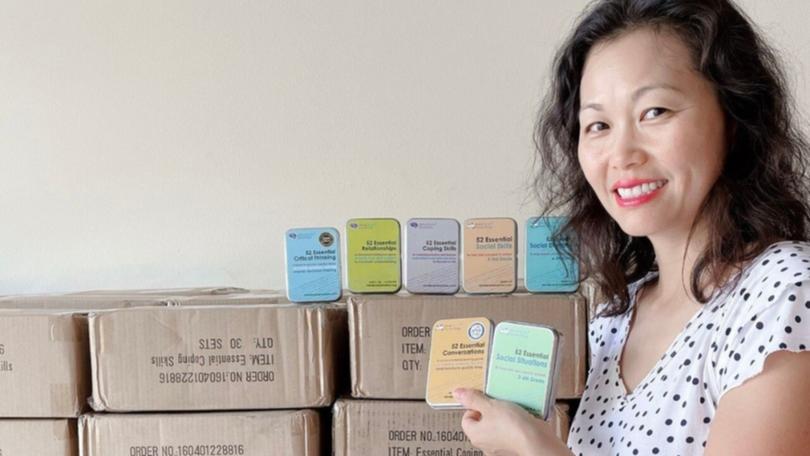CNBC: I make $US142,000 a month from Amazon alone. Here’s my top three side hustle mistakes to avoid

In 2018, I was a full-time graduate student and working part-time as a course designer at my university. Inspired by a class project and my own personal struggles, I decided to launch a side hustle selling card games on Amazon to help people build “human skills” like emotional intelligence and critical thinking.
This side hustle saw me through the next five years while I completed my Ph.D. When I started, I didn’t know much about running a business, but today, I have five income streams.
I speak at schools and businesses, teach an online course about EQ, lecture at University of California Irvine, do freelance business consulting, and sell Mind Brain Emotion card games through my site and on Amazon.
Sign up to The Nightly's newsletters.
Get the first look at the digital newspaper, curated daily stories and breaking headlines delivered to your inbox.
By continuing you agree to our Terms and Privacy Policy.I bring in $220,000 (AUD$142,000) a month from the Amazon business alone.
When I talk with aspiring entrepreneurs about how to create side hustles that best fit their schedules and lifestyles, I always tell them to avoid these three mistakes:
1. Don’t overcomplicate your product
When I started my side hustle, I had major imposter syndrome. To compensate for that nagging doubt, I spent a lot of time researching and developing flashy product features that I thought would wow people, like including augmented reality components to the cards. But ultimately, this just confused my users, created more work for me and muddled my existing offerings.
Now that I’ve launched a dozen products and have heard plenty of pitches from aspiring entrepreneurs, my best advice is to resist the urge to complicate things. This will not only slow you down, but it will also inflate your costs.
I’ve learned that the key to success isn’t in piling on features — it’s about understanding the core value of your brand.
So before you begin any side hustle, ask yourself two key questions:
- What is the fundamental need that my product or service fulfills?
- What’s the smallest number of steps I can take to get there?
Once you launch, use real-world feedback as your guide. You can iterate and evolve based on actual customer needs, instead of your assumptions and second guesses. A straightforward solution can be a breath of fresh air in a world cluttered with choices.

2. Don’t settle for subpar service — even if you’re on a budget
If you are a side hustler, a great way to save money and grow your business is to work with fellow side hustlers who share your sensibility. However, it’s important to remember that if you have a collaborator who is also constantly growing and changing, you can run the risk of unpredictable service.
Last year, I ended up parting ways with a social media manager and SEO vendor who were both solo entrepreneurs who wanted to turn their side gigs into agencies. In their efforts to expand, they both handed my business to newer hires who had very little experience with my industry.
While I always believe in giving people the chance to learn and improve, ultimately, I wasn’t being given the attention and priority I was promised.
The key to success isn’t in piling on features — it’s about understanding the core value of your brand.
On the SEO side of things, I stayed with that vendor for far too long, even though I was unhappy with the service and it actually cost me money, affecting my earnings for the year. November, typically my top time of year, was down by 55 per cent compared to my best month in 2023.
As much as collaboration can be beneficial, it’s crucial to be diligent about who you hire — and if you feel like something is no longer serving you, don’t be afraid to make a change.
3. Don’t just rely on networking to move your idea forward
As a solo entrepreneur, I longed for clear roadmaps, blueprints, and decisions, so I applied and was accepted to incubators at Harvard, UC Irvine and USC.
I had access to top executives and advisers and I took advantage of them, but these meetings often left me feeling confused and overwhelmed. Even though they were well-intentioned, many of these advisers ended up projecting their own ambitions and mistakes onto me.
My best advice is to pay close attention to skepticism and feedback in meetings like this, but try to not be swayed by the ideas thrown at you. I’ve found that relying too much on external validation diluted my vision and slowed my progress.
Ultimately, a veteran perspective can be helpful, but the responsibility to act, and the wisdom to sift through their advice, rests solely with you. It’s important to trust your own judgment and remember that this journey is your own.
